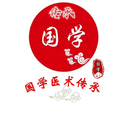|
Understanding Pulse Diagnosis: Identifying Deficiency and Excess
Pulse diagnosis refers to the method by which a physician uses their fingers to palpate the arterial pulse of a patient to explore the pulse characteristics and thus understand the patient’s condition. The locations for pulse diagnosis can be categorized into three methods: comprehensive examination, three positions examination, and cun-kou (寸口) examination. The cun-kou method is the most commonly used, located at the radial artery pulse points on the wrists, divided into three sections: cun (寸), guan (关), and chi (尺). The guan is at the bony prominence of the wrist, with the cun located before it and the chi located after it. The cun-kou pulse can reflect the qi of the organs: the left cun corresponds to the heart and small intestine; the left guan corresponds to the liver and gallbladder; the left chi corresponds to the kidney and bladder; the right cun corresponds to the lung; the right guan corresponds to the spleen and stomach; and the right chi corresponds to the kidney. When performing pulse diagnosis, attention should be paid to the time, posture, and technique. The examination should be conducted in the morning when the patient is at rest; if the patient has been active, they should rest for about 15 minutes before the pulse diagnosis. The patient can be seated or lying down, with the arms extended and palms facing up, ensuring the arms are at the same level as the heart. During the pulse examination, three fingers should palpate simultaneously, applying balanced pressure, starting lightly and increasing to moderate, categorized into three levels: superficial (浮取), moderate (中取), and deep (沉取). The duration of the pulse diagnosis should be no less than one minute. A healthy pulse should correspond to four beats per breath, with palpable pulses in all three sections (cun, guan, chi), not too superficial or too deep, and should be smooth and strong. Common pulse types include: superficial pulse (浮脉), deep pulse (沉脉), slow pulse (迟脉), rapid pulse (数脉), deficient pulse (虚脉), excess pulse (实脉), slippery pulse (滑脉), bounding pulse (洪脉), thin pulse (细脉), and wiry pulse (弦脉). Superficial pulse: palpable with light pressure, diminishes with heavy pressure. Main condition: exterior syndrome due to external pathogens remaining on the surface, where the defensive qi resists the pathogen, causing the pulse to be superficial. A strong superficial pulse indicates excess, while a weak superficial pulse indicates deficiency. In cases of chronic internal injury with deficiency of yin blood and insufficient yang qi, the pulse may be superficial and weak, indicating a critical condition. Deep pulse: imperceptible with light pressure, palpable with heavy pressure. Main condition: internal syndrome. A strong deep pulse indicates internal excess, while a weak deep pulse indicates internal deficiency. If pathogens are trapped internally, qi and blood stagnate, leading to a strong deep pulse indicating internal excess; if the organs are weak with yang deficiency, the pulse will be weak and deep. Slow pulse: pulse rate is slow (below 60 beats per minute). Main condition: cold syndrome. A strong slow pulse indicates real cold, while a weak slow pulse indicates false cold. Cold causes stagnation, slowing the movement of qi and blood, resulting in a strong slow pulse indicating real cold syndrome. If yang qi is deficient and unable to move qi and blood, the pulse will be weak and slow, indicating false cold syndrome. Rapid pulse: pulse rate is rapid (above 90 beats per minute). Main condition: heat syndrome. A strong rapid pulse indicates real heat, while a weak rapid pulse indicates false heat. In the early stages of an external heat illness, with internal organs in a state of excess heat, the pulse will be fast and strong, indicating real heat. If yin is deficient and fire is excessive, leading to insufficient fluids and blood, the pulse will be fast and weak, indicating false heat. Deficient pulse: all three sections (cun, guan, chi) are weak. Palpable only with heavy pressure. Main condition: deficiency syndrome, often due to deficiency of both qi and blood, making it difficult to generate a pulse, hence it feels empty. Excess pulse: all three sections (cun, guan, chi) are strong. Main condition: excess syndrome, where pathogenic qi is vigorous and the righteous qi is abundant, leading to a strong pulse due to the fullness of qi and blood. Slippery pulse: feels smooth and flowing, like rolling a marble. Commonly seen in young and healthy individuals with abundant qi and blood. In pregnant women, a slippery pulse indicates strong qi and blood nourishing the fetus, which is a physiological phenomenon. Bounding pulse: large and strong, like surging waves, with a rising and falling rhythm. Main condition: excess heat. Internal heat causes the pulse vessels to expand, resulting in a wide pulse shape, as heat excess burns and causes qi and blood to surge, leading to a pronounced pulse. Thin pulse: feels thin like a thread, with distinct rises and falls. Main condition: deficiency syndrome, often seen in cases of yin deficiency or blood deficiency. It can also indicate dampness. Insufficient yin blood fails to fill the pulse vessels, or dampness obstructs the vessels, resulting in a thin pulse. Wiry pulse: straight and long, firm under the fingers, like pressing a guitar string. Indicates liver and gallbladder issues, pain syndromes, or phlegm and fluid retention. If qi is obstructed, the liver fails to disperse, leading to a tense and wiry pulse. In illness, qi may be chaotic or phlegm may be retained, causing a wiry pulse. Explanation of Pulse Characteristics Pulse Diagnosis Pulse Diagnosis and Formulas |


